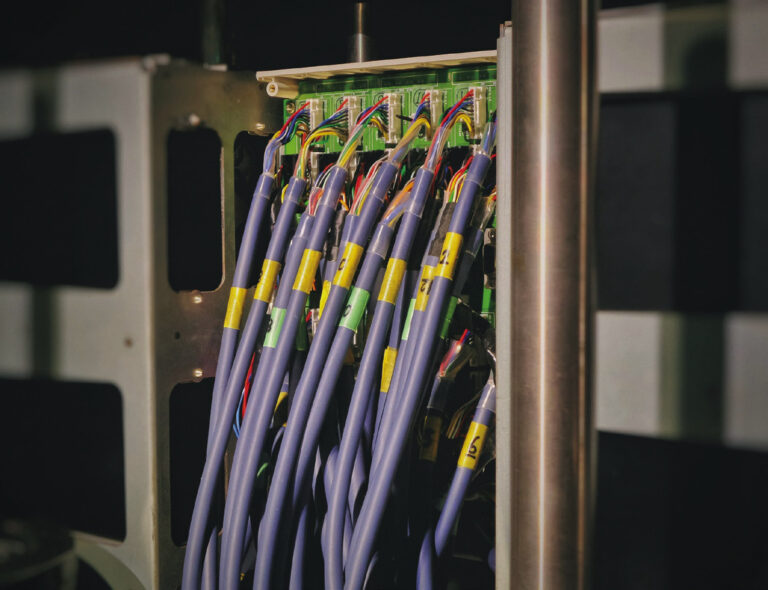For many residents in Alger County, high-speed internet access remains a challenge. A new initiative, the Broadband Equity, Access and Deployment program, seeks to address this issue.
Michigan has secured $1.559 billion — the fourth-largest allocation in the country — to close connectivity gaps left by earlier programs.
“The BEAD program is the nation’s largest single investment in high-speed internet infrastructure ever,” said Eric Frederick, Michigan’s chief connectivity officer, who plays a key role in implementing this effort. “Its goal is universal availability — getting service to every remaining location that still lacks reliable broadband.”
Broadband expansion remains a need in Alger County, but the scale of the issue may not be as vast as expected.
“There’s actually very few locations that BEAD is going to connect in Alger County — only like 139,” Frederick said. “And that seems really low, right? Because we know how disconnected the U.P. is, but it’s because these other programs that are out there that are responsible for connecting those places that we can’t fund because we can’t duplicate federal funds.”
The Federal Communications Commission has channeled funds through initiatives like the Rural Digital Opportunity Fund and the Enhanced Alternative Connect America Cost Model, or E-ACAM. Companies such as Highline, UP Telephone, Hiawatha Communications and Baraga Communications have been key players in broadband infrastructure development across the Upper Peninsula.
The BEAD program distributes funding via a competitive bidding process. Internet service providers, cooperatives and public- private partnerships can apply to bring high-speed internet to underserved areas.
“Our project application window is going to end April 9 for the first round of applications,” Frederick said. “And then we evaluate what locations didn’t get included in a project and have a second round.”
The 139 identified locations in Alger County encompass homes, businesses and essential institutions like schools and libraries.
These locations fall into two categories: unserved (lacking speeds of at least 25/3 Mbps) and underserved (lacking speeds of 100/20 Mbps).
“We believe our allocation is enough that we can build to all unserved and underserved locations in Michigan through the BEAD program,” Frederick said.
Connecting rural areas like Alger County presents logistical and financial challenges. Frederick noted some of the unique aspects of connecting the U.P. as compared to more urban areas.
“We’re talking upwards of $100,000 to $200,000 per location to get to for fiber, and that doesn’t necessarily make economical sense when there’s other technologies that could reach those places,” he said.
In such cases, alternative technologies like licensed fixed wireless or satellite service may be considered.
“For example,” Frederick said, “there are six locations on Isle Royale that I have to guarantee service to. That’s probably going to be a satellite solution.”
Another concern is ensuring affordability and digital literacy once infrastructure is in place.
“Infrastructure is only half of the battle when it comes to making sure that folks can leverage this technology to improve their quality of life,” Frederick said. “We want to create a more digitally equitable Michigan to make sure people can actually use the service once it’s available.
“We want to make sure that once this infrastructure is built folks are able to subscribe to it because it’s affordable, they have devices to connect to it and they have the skills to use it.”
Although BEAD’s direct impact in Alger County is limited due to earlier federal investments, it is part of a larger effort to expand connectivity across the Upper Peninsula. Many rural areas share similar challenges, and a combination of federal and state programs is working toward comprehensive broadband access.
“The U.P. is complicated,” Frederick said. “The Enhanced ACAM program, which rolled out in October of 2023, was a big surprise. We called it our ‘October surprise’ because we didn’t know that program was coming. And the eligible companies across the U.P. took all of that money. They agreed to do this buildout, so it really took swaths of the U.P. off the map for BEAD.”
As the first round of BEAD applications closes this month, Frederick’s team will assess which areas received bids and which may require additional outreach.
“If no provider bids for a certain area, we’ll actively seek a solution,” he said. “And then we would take a look after that second round and say, ‘OK, what do we have left?’ And then after that we can look at talking to those companies that are in the area and say, ‘We didn’t get a bid. Could you do it?’And work with them on that.”
By 2030, Michigan aims to have every home, business and institution connected to high-speed internet.
“We like to say that our work is not about the technology — it’s about people,” Frederick said. “And so we keep that focus in our office, because that’s the end game. It’s making sure that once our funding has run out and we’ve built all this infrastructure, what’s next? And we can’t just leave these networks hanging.”
